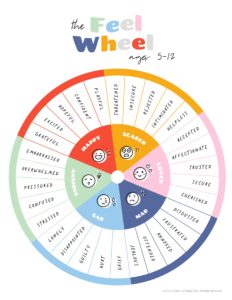When my daughter went to play next door, I didn’t expect her to come home a few minutes later in tears. “Bailey said she wanted to play with her other friends instead of me,” my 7-year-old managed to explain between sobs. Bailey often asked my daughter to play and then would ditch her at the last minute. And, this time, her rejection stirred up heartbreak in my girl and protective anger in me.
At their age, I knew they both needed to learn how to be a good friend. But I gotta be honest—I was starting not to like that little Bailey kid. When our children move beyond preschool, our ability to handpick their friends changes, which could mean you won’t click with every new friend your child makes. Follow these 5 guidelines for when you’re wondering what to do when you don’t like your child’s friend. (And, hey, if your child is a tween or teen, your approach can be a little different.)
1. Pause and assess your own feelings.
Sometimes, our biases or unresolved issues impact whether or not we like our child’s friend. Considering why you don’t like your child’s friend enables you to evaluate the friendship more objectively by differentiating between your feelings and any legitimate cautionary flags. You might discover that your discomfort stems from something not inherently problematic, or you might confirm a legitimate cause for concern.
Consider questions like: What is it about this friend that makes me feel uncomfortable? Does her mom’s personality clash with mine? Am I worried about her sibling’s poor choices? Are the friend’s manners or language a little rough around the edges? Does your child act out of character around the friend?
2. Talk about the friendship with your child.
In elementary school, children are still shaping (and practicing) their social skills that help them make friends. Your guidance is pivotal to your child’s understanding of healthy relationships. When concerns arise about your child’s friend, consider it an ideal moment to strengthen open and honest communication between you while also teaching him about friendship.
Choose a calm moment to talk. Focus on observations rather than judgments. For example, instead of saying, “Your friend is a bad influence,” say, “I noticed some behaviors in your friend that make me uncomfortable, and I want to talk about it. ” Ask open-ended questions to figure out your child’s perspective and create space where your child can share his thoughts without feeling defensive. Consider questions like: What do you like about him? Does she ever do or say something that makes
3. Get to know the friend.
Take deliberate steps to get to know your child’s friend better. Offering snacks or a popsicle on the porch can be an easy way to pause a playdate and casually chat. Keep an open mind as you look for positive qualities and shared interests with your child.
You’ll gain insights into her personality, background, and values by intentionally talking with your child’s friend. Building a connection with your child’s friend also reinforces trust and open communication between you and your child by demonstrating a commitment to understanding and supporting her friendship skills.
4. Set healthy boundaries.
In most cases, you can’t control whether your child sits next to the friend in question at school. However, you call the shots in your home and with your child. Establish clear rules for behavior and activities. Coach your child on responding if a friend suggests doing something that goes against your rules or causes her to feel uncomfortable, like watching a PG-13 movie or going to the playground without telling anyone. Also, consider limiting playtime with the friend, determining where they can hang out and for how long.
Start talking with your child now about healthy boundaries in relationships. When our girls were younger, we told them that healthy boundaries are like invisible stop signs telling people what’s OK and not OK. If a friend is being mean, discussing an uncomfortable topic, or not respecting your rules, teach your child what to say, such as: “Stop. I don’t like being talked to that way.”
Building up friend-making abilities takes lots of practice. Look for everyday moments to guide your child to identify the qualities of healthy friendships and positive traits in peers. Click To Tweet5. Focus on your child’s friendship skills.
During the preschool years, children seem to quickly make a new best friend each time they head to the playground. However, at this age, many children begin to feel more self-conscious about making new friends. So, coach your child on what to say to start a conversation or how to join in with a group of kids. Try using these role-play guidelines.
Building up those friend-making abilities takes lots of practice. Look for everyday moments to guide your child to identify the qualities of healthy friendships and positive traits in peers. The family movie you just watched together—like one of these—often offers an easy way to discuss kindness, empathy, shared interests, and the importance of being surrounded by friends who encourage one another. Connect characters to real-life friends in your child’s life.
What advice would you give to a mom who is asking: “What to do when you don’t like your child’s friend?”










